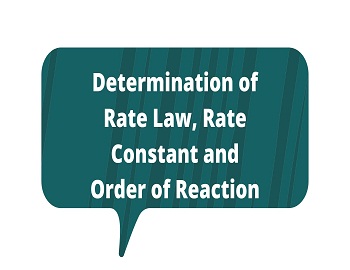What is Half-Life Period?
The half-life period is defined as “the time during which the concentration of a reactant is reduced to half of its initial concentration. It is generally represented by t1/2 or t0.5. The unit of half-life period is same as that of time.
Derivation of Half-Life Period for Zero and First Order Reaction:
The half-life period of first and zero order reaction can be calculated using the integrated rate equation-
i.e. For zero order reaction: The rate equation for zero order reaction is-
| k0 = (1/t) {[A]0 – [A]} ……….(i) Where, k0 = Zero order rate constant. [A]0 = Initial concentration of reactant. [A] = Concentration of reactant at time ‘t’ dec. When t = t1/2 , [A] = (1/2) [A]0 With these values, equation (i) becomes- k0 = (1/t1/2) {[A]0 – (1/2) [A]0} ⇒ t1/2 = (1/k0) {(2 [A]0 – [A]0) / 2} ⇒ t1/2 = (1/2k0) {[A]0} Hence, the half-life period for zero order reaction depends upon the initial concentration of reactants. |
For first order reaction: The rate equation for first order reaction is-
| k1 = (2.303/t) log a/(a – x) ……….(i) Where, k1 = First order rate constant. a = Initial concentration of reactant. x = Concentraion of products at time ‘t’ sec. When t = t1/2 , x = a/2 With these values, equation (i) becomes- k1 = (2.303/t1/2) log a/[(a) – (a/2)] ⇒ t1/2 = (2.303/k1) log [(a)/(a/2)] ⇒ t1/2 = (2.303/k1) log 2 ⇒ t1/2 = (2.303/k1) (0.3010) ⇒ t1/2 = 0.693/k1 Hence, the half-life period of a reaction of the first order is independent of the initial concentration of reactant but depends upon only the rate constant of the first order. Its unit is that of time, i.e. sec, min, etc. |









Comments (No)